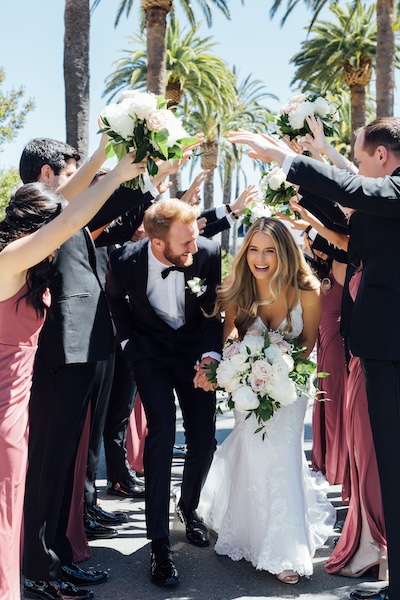Business + Marketing
As a portrait photographer, your market and client needs are constantly changing. Recognizing, listening and adapting your business to those changes will help you thrive as a portrait photographer.
No, I am not talking about dropping your prices by X amount because so-and-so down the street charges X; I am talking about making reasonable, well-educated changes to your offerings based on what your clients and inquiries are asking for.
When I first launched my portrait photography business, I was convinced that including all of the digital files was my only option because that is what I wanted as a client. This may be true for my wedding clients, but I can’t tell you how many family portrait inquiries I have received where the clients were looking for “just a few,” whether to send out in an announcement, for that year’s holiday card or just to get an updated family portrait. I adapted to my market and adjusted my pricing and packages accordingly.
My very first full year in business, my expenses, not including federal and state taxes, were $16,585.95. This was before I began shooting with film. If I were only photographing portraits at $400 a session, I would have to photograph 42 sessions to break even. To make $35,000 a year, I would have to photograph 129 sessions. My expenses have grown year after year, as my business grows. Run the numbers!
Knowing your Costs
Yes, I know, this section is almost identical to my last article on increasing your wedding photography prices, but I still believe this is the most important part of pricing, regardless of what you shoot.
Do you know what your costs are for every portrait session you photograph? What are your general costs of running a photography business? If you are throwing random numbers out there without knowing your costs, stop it now. And if you are charging less than what it costs you, you aren’t running a business.
Re-analyze your costs at least annually. As your business grows, your costs grow and your pricing will need to be adjusted accordingly. Write out these costs, even if they are estimates from prior years. I have been a longtime user of Táve, a studio management software whose features I explained in detail here. I can log my expenses per job and see what my take-home was for each job. I also log my general costs for my accountant to use for tax reporting and to help me estimate what my rates need to be for the next year.
Here are some examples of per-session costs (you may have additional costs based on what you are offering):
– Print products, including albums, prints and anything else included in your packages
– Film supply and developing expenses if you use film
– Post-processing fees if you outsource your editing
– Album design fees if you have someone design your albums
– Postage
– Cost of travel
– Sales tax
And here are some of the general costs of running a photography business:
– Advertising
– Banking fees
– Depreciable assets
– Education and training
– Equipment maintenance
– Insurance
– Legal and professional fees
– Studio or commercial Fees
– Software and computer upgrades
– Supplies
– Taxes
Pricing Portrait Photography: Should You Include Digital Files?
When I first started my wedding photography business, I swore that I would never photograph newborns (later I would expand from wedding to newborn photography). I also swore I would never make clients pay extra for digital files.
Would it be surprising to hear that my portrait pricing has a session fee that is separate from digital packages? The family books a portrait session by paying a session fee and can purchase prints and digital files after they receive the gallery. I previously offered all-inclusive portrait sessions where the session fee and digital files were all included. It wasn’t until I started photographing families that I recognized a need for pricing that was different than my all-inclusive collection.
When I moved my business to upstate New York, I noticed a number of my family inquiries asking for a “few digital images.” I listened to the feedback I was receiving and separated my session fees and digital collections. My local family sessions offer three different session lengths (30 minutes, 1 hour or 1.5 hours), and my clients purchase digital packages after receiving their gallery. They have the option to purchase 10, 20 or all of the digital images, along with different print products and albums.
Organizing it this way allows me to serve more clients in my area with different budgets and photography needs. One of the most important lessons I have learned since I started my business is that you sometimes need to make changes to your business based on the market you are in (check out tips on building business in a small town). I moved markets and my packages were not serving the clients in my new market. Since making my change, the newborn and family portrait side of my business has grown substantially.
Studio Pricing vs. Traveling to Client Pricing
A lot of portrait photographers have studios (in fact, studio photography is having a resurgence). While I would love one, it is more important to me to find the right one. I cannot speak from experience, but I do know a number of portrait photographers that offer both in-studio and in-home sessions.
The difference is having your clients come to your controlled space or to travel to your client’s home. Having them come to you would remove that cost of travel, so your studio pricing may be slightly lower than traveling to them. Compare driving to your studio in 5 minutes (10 minutes round trip) or driving to your client’s home 30 minutes away (1 hour round trip). What is that extra time worth to you? Price accordingly.
Studio sessions may also be shorter than in-home sessions because you are in your own controlled environment. You will know your light and your location like the back of your hand. If you can offer shorter sessions because of this, your pricing can also be adjusted. It may also be easier to do multiple sessions in one day, also knowns as the ever-profit-boosting mini sessions, if you do not have to change the location of each session.
Portrait Photography: Don’t Price to Compete with Others
I remember one conversation I had with a potential portrait client. We were reviewing my offerings on the phone and they took me by surprise when they said, “Well, I found a photographer that charges $200 for two hours and includes all the digital files.” I politely stood behind my pricing and work. I suggested that if the other photographer produced the kind of work they were looking for at the rate they wanted to pay, that it may be a better fit for them. At times, saying “no” can be better for your business.
I shoot film during my sessions. The cost of my film alone for a two-hour session would be substantially higher than their $200 fee.
What Are the Costs of Being a Destination Wedding Photographer Who Shoots on Film?
There will always be someone who can do it for less. You will always receive inquiries that point this out. I know my costs. I know what I need to charge for my time, talent and supporting my family. It is not $200.
Don’t price yourself to compete with others. They have their own clients, and you have yours. Price based on what your clients are looking for, not what another photographer’s clients are looking for. If you are consistently booking clients and they are happy with the experience and end result, you are doing what you should be doing and at a price point that works for them.
Pricing for Repeat Clients
The wonderful thing about portrait photography is that you will have clients that will book you year after year. As a thank you for their continued support, I offer a discount to my repeat clients. I know some photographers offer prints to repeat clients.
I want to see my clients again. I want to photograph them as their family grows. I call portrait photography the snowball effect. You will have repeat clients, and you will have new clients that may eventually turn into repeat clients. You don’t have to give them an incentive to keep coming back, but I think it helps keep the base of that snowball strong.
Michelle Lange is a wedding and newborn photographer and educator based in Albany, NY. She has written about the best online gallery features, striking a healthy work-life balance, and photographing lifestyle newborn sessions.





